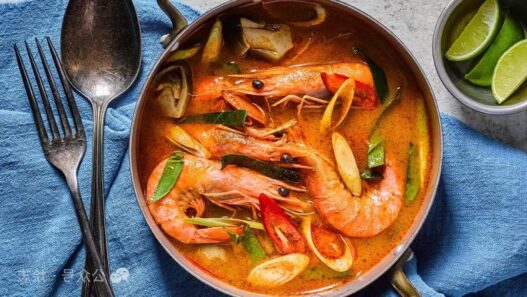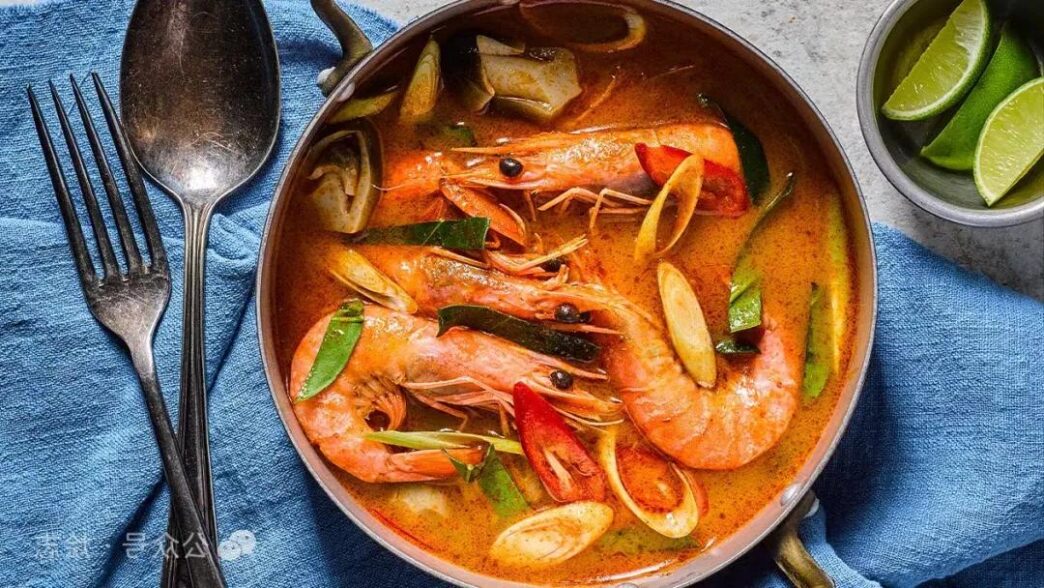When you think of Thai food, the first thing that probably pops into your mind is Tom Yum. This iconic dish frequently ranks among the top spots in various global food lists, including CNN’s annual Top 50 Foods, TasteAtlas’ World’s Best Foods, and The Guardian’s Top 50. It’s no wonder that Tom Yum is often seen as a quintessential symbol of Thai cuisine. In this post, we’ll delve into what Tom Yum really is, its history, and the unique cultural essence behind this legendary soup.
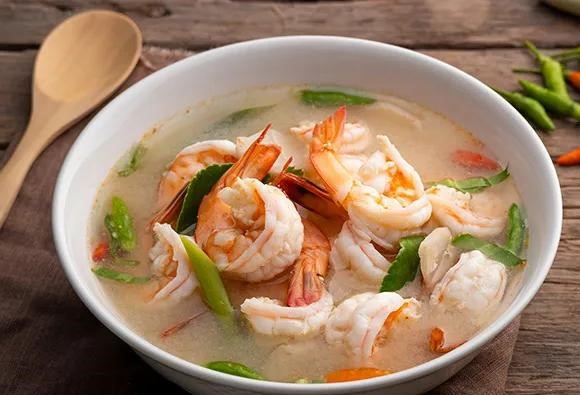
What is Tom Yum Soup?
Tom Yum is a bold and aromatic Thai soup known for its signature sour, spicy, and savory flavors. It typically features shrimp (gai in Thai), with additional ingredients like lemongrass, galangal, kaffir lime leaves, cilantro, and Thai basil. Along with chili, lime, tamarind, fish sauce, and sometimes coconut milk, these ingredients create a flavor explosion that is loved worldwide.
However, let’s not get lost in the details—Tom Yum is, at its core, a shrimp-based soup that’s packed with aromatic herbs and spices. The iconic soup’s fame is largely due to its bold, delicious taste.

The Origins of Tom Yum: A Fusion of Local and Foreign Flavors
Tom Yum doesn’t have a clear origin story. The name itself translates to “boiled shrimp soup,” but it doesn’t point to a single moment of creation. Instead, it evolved as part of Southeast Asia’s diverse culinary history, shaped by local ingredients and the arrival of foreign spices. Chili, for example, was introduced by the Portuguese in the 16th century. Over time, as chili became more common, the modern version of Tom Yum began to take shape in the 17th century.
The first recorded mention of a soup resembling Tom Yum appeared in 1888. At that time, it was called “Tom Yum Black Fish Soup” and used black fish from the Mekong River. Black fish was chosen for its firm meat, which holds up well in soups. By 1897, the soup was described as containing shrimp, marking a key shift in the recipe.
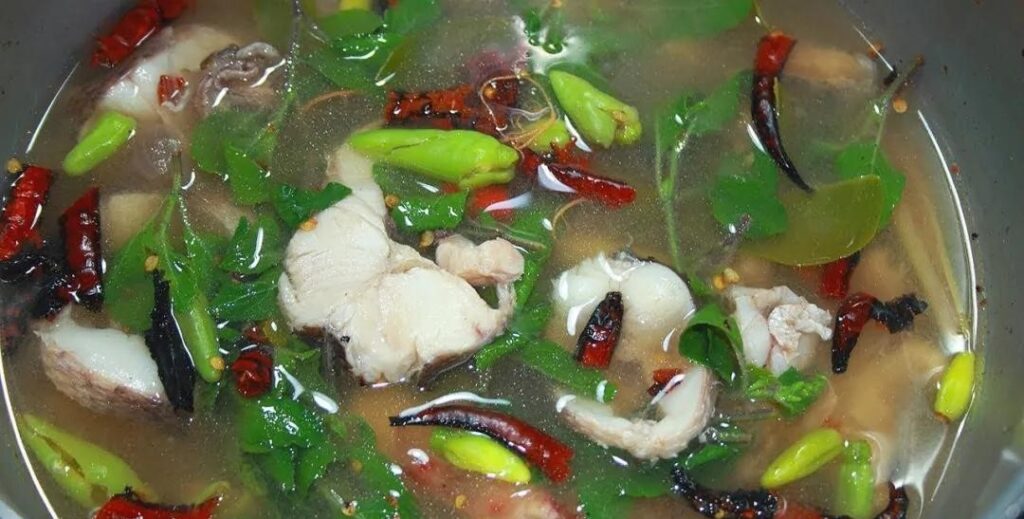
Interestingly, the earliest versions of Tom Yum were made with different ingredients. The 1888 version used unripe green mango for acidity. By 1897, tamarind had replaced it as the souring agent. It wasn’t until later that lime and kaffir lime leaves became standard additions for the sour flavor.
The Evolution of Tom Yum Soup
Today, Tom Yum is almost always served in a rich, red-orange broth. This is a departure from the clear version found in traditional recipes. Thai food historian Krit Lualamai suggests that coconut milk was added to Tom Yum in the early 20th century, during the reign of King Rama VI (1910-1925). Before that, it was a simpler, broth-based soup.

Tom Yum is part of a broader tradition of sour and spicy soups in Southeast Asia, especially in countries like Cambodia, Laos, Myanmar, and Vietnam. These countries share similar climates and ingredients, which makes their soups quite alike. However, Thailand’s unique cultural evolution, free from large-scale colonial invasions, helped it refine and popularize Tom Yum. Today, it stands as one of the region’s most famous dishes.
Tom Yum Beyond Shrimp
Although Tom Yum is most commonly associated with shrimp, it actually comes in many variations. For example, you’ll find Tom Yam Gai (chicken), Tom Yam Pla (fish), and even vegetarian versions in different parts of Thailand. This versatility speaks to the adaptability and universal appeal of Tom Yum soup.
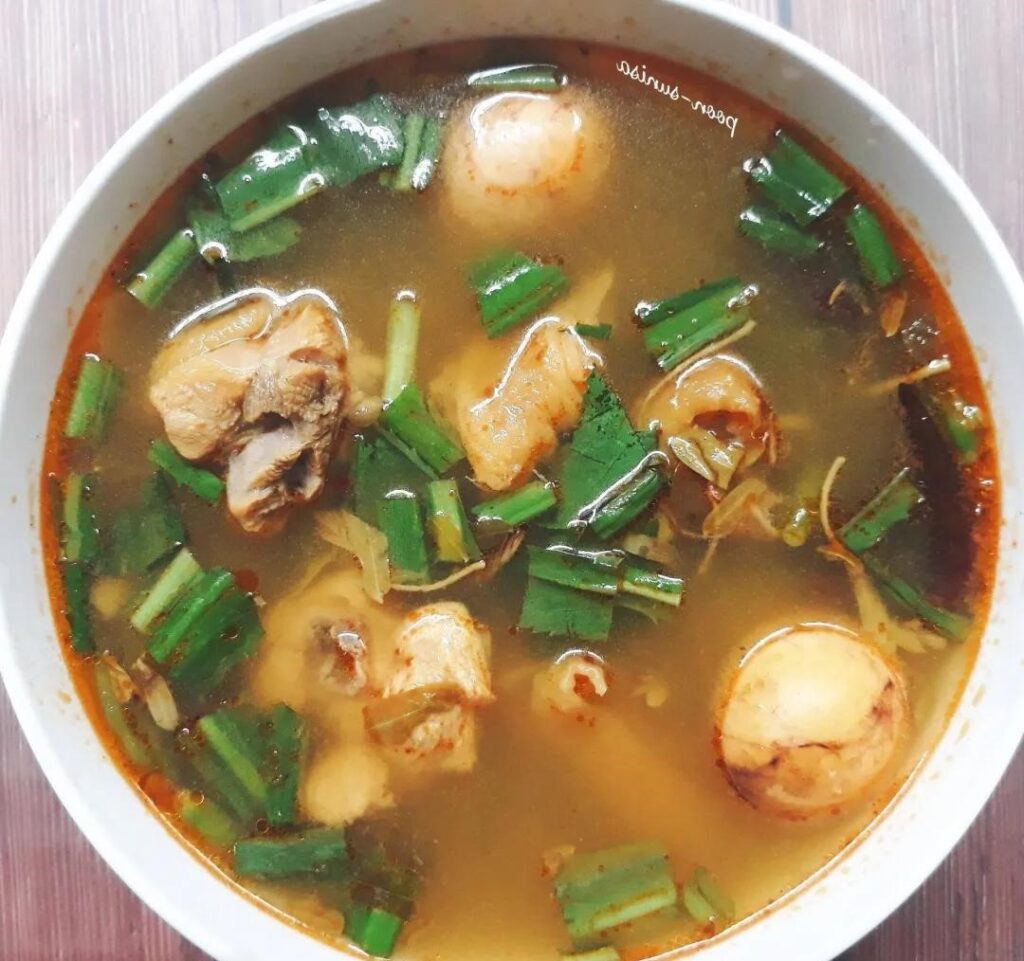
In the West, when people refer to Tom Yum, they usually mean the shrimp-based version, but this is just one of many possible versions of this beloved soup.
Conclusion: Why Tom Yum Defines Thai Cuisine
Understanding Tom Yum is like understanding Thailand itself. This dish blends centuries of local flavors, foreign influences, and innovative culinary techniques. It’s a dish that has evolved naturally, shaped by its environment and the people who’ve enjoyed it for generations. Today, Tom Yum not only embodies the essence of Thai cuisine but also represents the rich cultural history of Southeast Asia as a whole.







